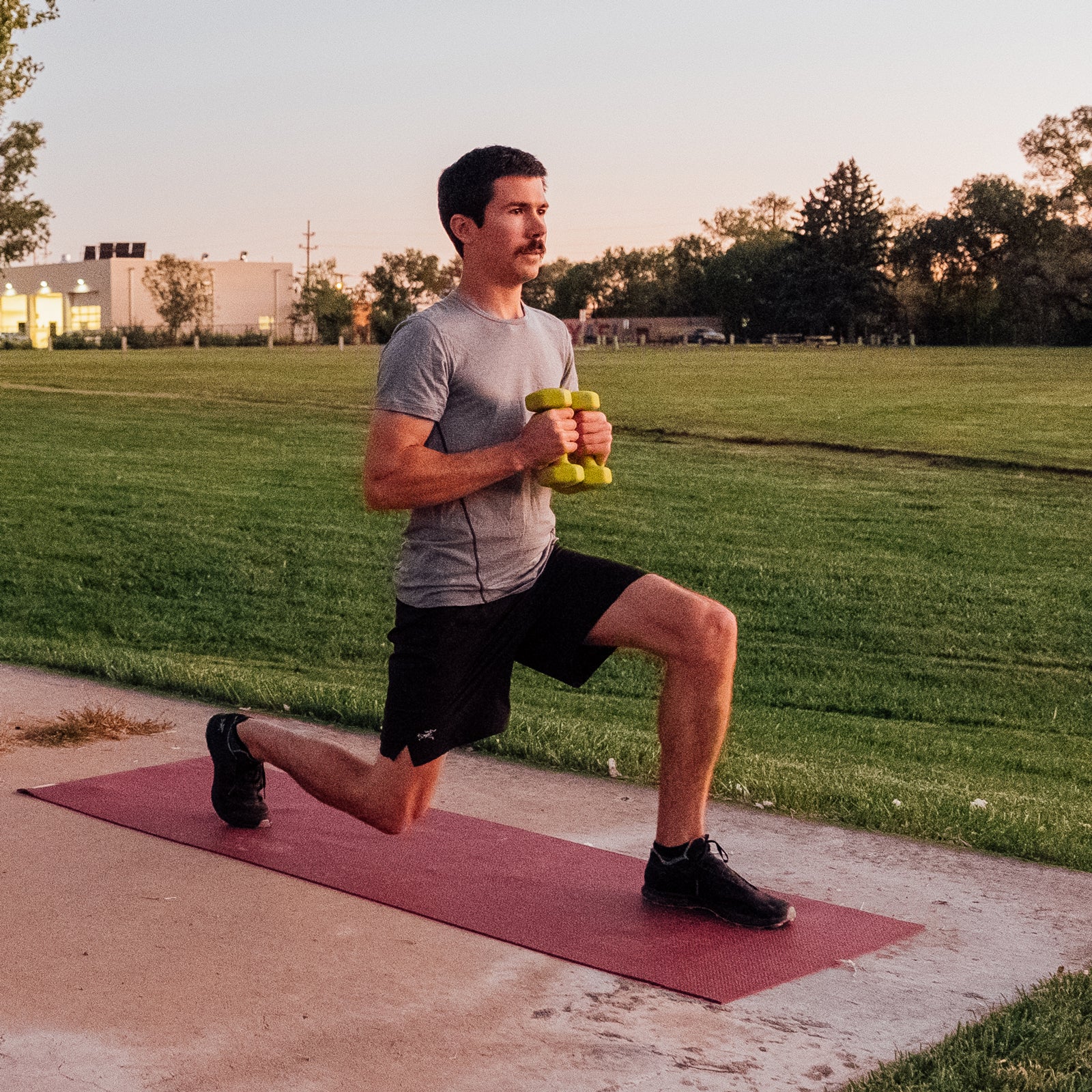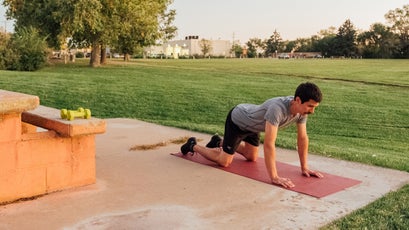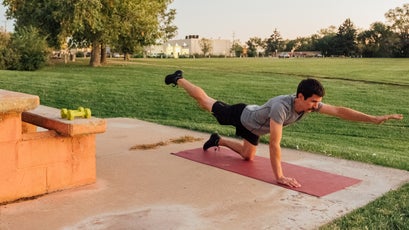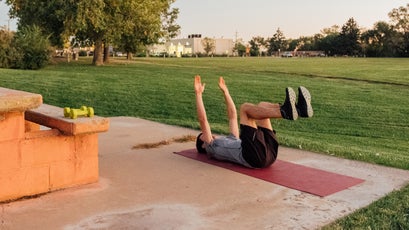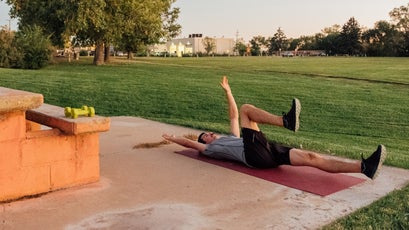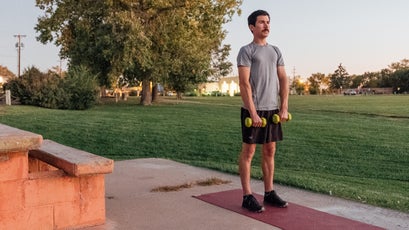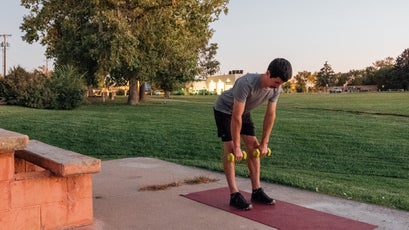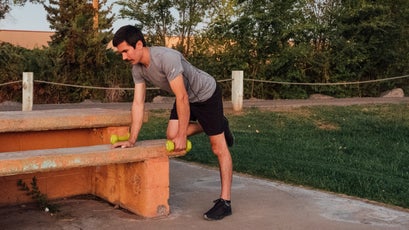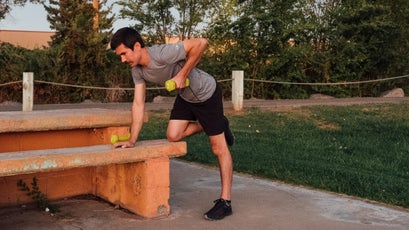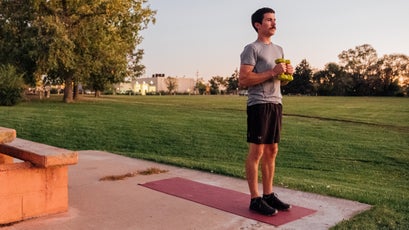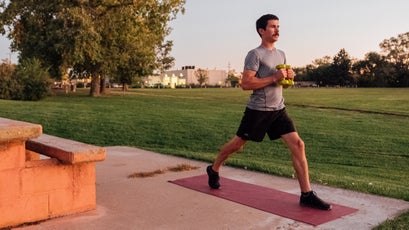Lower-back pain is miserable and all too common: roughly experience it at some point in their lives. But widely accepted methods of coping with that discomfort, like avoiding exercise, might actually make things worse.
“Your body is designed around short-term survival instincts, so when you have pain, you try to avoid it,” says , a British Columbia–based physical therapist, trainer, and cofounder of . It might seem logical to avoid exercise-related discomfort by eliminating certain movements altogether. But this can propel you into a cycle of inactivity, leading to weaker muscles and more soreness and pain over time, he explains. To break the cycle, you have to train, even if it hurts a little—it’s one of the best things you can do for the lower back.
If you’ve sworn off deadlifts and bent-over rows, it’s time to get reacquainted. There are plenty of variations that can help you ease into these exercises without aggravating your back. Below, Spinelli shares a weighted full-body routine designed to build strength, boost confidence, and help you progress to other exercises over time.
Spinelli recommends doing this routine three times per week. Start with one set of each of the following moves. As you get stronger and your discomfort decreases, gradually increase the number of sets, capping it off at four. Shoot for six to twelve reps in each set, but choose your volume (and your weight) based on form: stop when you still have three to four good reps in the tank. As you get more comfortable with the exercises, you can experiment with stopping one or two reps short of failure.
The key to this workout is paying attention to your body. Try evaluating your pain on a scale of one to ten, Spinelli recommends, and keep it below a three while you work out. If a certain exercise hurts, decrease the range of motion, perform fewer sets or reps, or reduce the weight. If your pain worsens (to a level five or above), increases as you work through your reps, is heightened after your workout, or continues after a 24-hour period, you should back off. If you’re rehabbing an acute injury, check in with a physical therapist before beginning this routine.
The Moves
Bird Dog
What it does: Gently builds control and strength in the lower back by challenging your trunk to resist rotation and arching at the lumbar spine. Slowly moving your arms and legs between reps strengthens the glutes and rear shoulder muscles, which help lessen the load on your lower back.
How to do it: Begin on all fours, with your hands directly under your shoulders and your knees under your hips. Brace your core, and lift your opposite arm and leg off the floor until they’re straight and level with your torso. Hold there briefly (three to five seconds) before returning your hand and knee to the floor. Repeat with the opposite arm and leg, keeping your hips and shoulders square. Maintain a neutral spine from the crown of your head to your tailbone; avoid sagging or arching your back. If this variation is too easy, do the move from a plank position.
Volume: One to four sets of six to twelve reps on each side.
Deadbug
What it does: Strengthens the abdominals with your pelvis tucked, which can help relieve lower-back stress.
How to do it: Lie on your back, with your knees bent and your feet flat on the floor. Press your lower back into the floor to fire up your abdominals. Then lift both knees until your shins are parallel to the floor. Extend both arms toward the ceiling. Keeping your lower back pressed into the floor, slowly lower one arm backward and straighten the opposite leg. Only lower as far as you can without allowing your lower back to lift off the floor. Return to the starting position, making sure your knees don’t creep toward your chest. Repeat with the opposite arm and leg. If pressing your lower back into the floor is uncomfortable, allow a small arch, but keep it consistent throughout the move. Gradually work your way down to the floor as you get stronger.
Volume: One to four sets of six to twelve reps on each side.
Romanian Deadlift
What it does: Builds strength in the glutes and hamstrings. This variation offers similar benefits to other deadlift variations, but it’s gentler on the back because you’re not pulling the weight off the floor with every rep. Starting this exercise from the top helps you build strength without stressing your lower back and will help you eventually progress to traditional deadlifts.
How to do it: Stand in an athletic stance, with your feet hip-width apart, holding two kettlebells or dumbbells in front of your thighs, with your palms facing your body and your arms straight. Choose your weight according to your rep scheme. Start lighter than you think you need, and work your way up. To get into the starting position, consider moving your weights to a bench first and then lifting them into position rather than lifting them directly from the floor. This will help protect your back.
Bend your knees slightly, sit back into your hips, and hinge forward at the waist to slowly lower the weights. Let them skim against your thighs, and stop when you feel a slight pull in your hamstrings. Choose your depth based on what feels approachable for your body. Return to a standing position, and squeeze your glutes at the top. Repeat. You should feel your glutes and hamstrings light up during this move.
Volume: One to four sets of six to twelve reps.
Three-Point Dumbbell Row
What it does: Strengthens the back, shoulders, and arms. This variation on the more traditional bent-over row puts less stress on the lower back, Spinelli explains, by using three points of contact to provide more support. This allows you to better isolate your middle and upper back muscles without loading your lower back.
How to do it: Start in a three-point stance, with your right knee and hand on a bench. Your right hand should be positioned directly under your right shoulder, and your right knee directly under the right hip. Your left leg should be extended, with your foot flat on the floor. Grip a dumbbell or kettlebell in your left hand, with your left arm fully extended toward the floor. (Choose your weight according to your rep scheme, as explained above.) Keeping your chin tucked and your back flat, pull the weight toward your rib cage, keeping your arm tight against your body. Then lower the weight with control until your arm is fully extended. Keep your core engaged and your spine neutral throughout the entire movement. Repeat.
Volume: One to four sets of six to twelve reps on each side.
Goblet Stationary Lunge
What it does: Builds strength through the legs’ major muscle groups. Many other lunge variations involve moving your feet between reps, which places stress on your back as you stabilize through various positions. Plus, for people with lower-back pain, holding weight in front of your body tends to be more comfortable than holding it behind your body or on your shoulders (as in back squats).
How to do it: Begin standing with your feet hip-width apart, holding a kettlebell or dumbbells against your chest with both hands in a goblet position. Slowly take a big step back with one foot, and lower your back knee to just an inch or two off the floor. Your legs should both be at 90-degree angles. Make sure your front knee is directly above and laterally in line with your front ankle. Allow your weight to be more heavily distributed on your front leg. Then drive through the midfoot of your front foot, and push yourself back up to standing, with both legs extended. Without moving your feet, bend your front knee to drop into your next rep.
Volume: One to four sets of six to twelve reps on each side.


